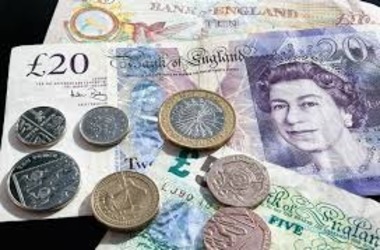 The dollar index remained almost unaltered at 92.90 in a lackluster trading session on Good Friday, reflecting levels which were not seen since the beginning of November and is on track for its third successive week of positive close as investors anticipate robust economic rebound against the backdrop of additional fiscal stimulus and Covid-19 vaccination.
The dollar index remained almost unaltered at 92.90 in a lackluster trading session on Good Friday, reflecting levels which were not seen since the beginning of November and is on track for its third successive week of positive close as investors anticipate robust economic rebound against the backdrop of additional fiscal stimulus and Covid-19 vaccination.
The US President Biden revealed a $2.25 trillion package, the second key stimulus program after the $1.90 trillion bill even though the fresh spending initiative will probably face hard GOP opposition, particularly related to a corporate tax hike rise to 28%.
A bond sell-off has also fueled greenback’s uptrend, with the maximum buying activity seen in other safe haven currencies such as the Japanese yen, the euro and the Swiss franc.
The US dollar’s fundamentals continue to stay robust and the currency has space for additional rally as the US economy is in a better position than other countries for a robust rebound from the Covid-19 pandemic.
Average hourly earnings on non-farm payrolls inched downwards by 0.1% m-o-m (or $0.04) to $29.96 in March, following a 0.3% rise in February, versus economists’ forecasts for a 0.1% increase. It was the foremost decline in average hourly earnings since June 2020. Averagehourly earnings for private-sector production and non-supervisory employees inched higher by $0.02 to $25.21.
The big volatility in employment rate in 2020, specifically in industries that run on low wage workers, perplexed the analysis of latest trends in average hourly earnings. On y-o-y basis, average hourly earnings have rose by 4.2%, following a downwardly amended 5.2% increase and lower than market forecasts for a 4.5% growth.
The country added 916,000 jobs in March, the highest in seven months, following an addition of 468,000 in February. Economists had anticipated 647,000 job additions for the reported period. The largest job additions of 280,000 were in leisure and hospitality, 190,000 in public and private education and 110,000 in construction.
The economy added 66,000 jobs in professional and business services, 53,000 in manufacturing and 48,000 in transportation and warehousing.
The US jobless rate is anticipated to decline to 6% in March, from 6.2% in February. The unemployment rate has been declining continuously in the last few months after hitting an all-time peak of 14.8% in April 2020, but many trust that it has been underplayed by people wrongly categorizing themselves as being “employed but absent from work.” The labor force participation rate inched higher to 61.50, reflecting a three month high, from 61.40%.
Traders will also track any alterations in the labor participation rate and the average earnings growth, which could offer an in-depth view into whether low-income workers are entering back to labor market. Fed Chair Powell in recent times has stated that the labor participation rate is increasing. The Federal Reserve forecasts unemployment rate of 4.5% in 2020 and 3.9% in 2022.
Non-farm payrolls rose by 647,000 in March, reflecting the strongest job growth in 5 months, driven by a growth in manufacturing and construction, and leisure and hospitality, against the backdrop of relaxation in business prohibitions, declining covid-19 infections, a quick vaccine administration program and ongoing backing from the government.
Even then, the employment remains roughly 8.80 million below the pre-pandemic February 2020 as the job market has so much to go before totally rebounding from the pandemic jolt. Fed Chair Powell in recent times has stated that there is a good rationale to anticipate employment scenario to improve in the forthcoming months even though a bit of time is necessary to reach the maximum level.




